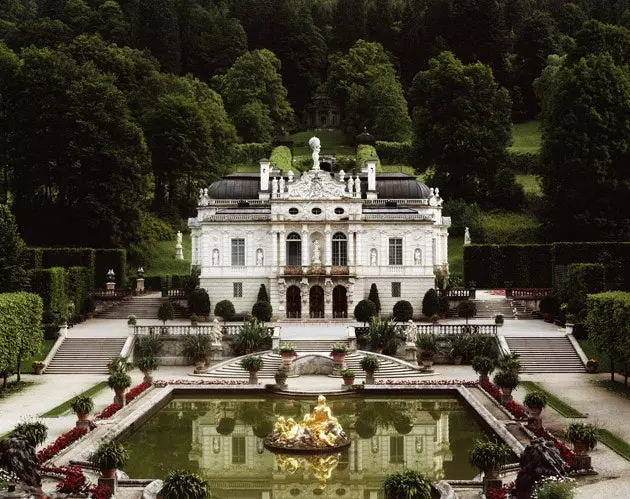
Schloss Linderhof: More Madness of Ludwig II
Linderhof, Neuschwanstein and Herrenchiemsee are the holy trinity of custom-designed castles of the fantasies of the king of Bavaria. Neuschwanstein is the most famous castle in the world, already dissected here by Javier Zori del Amo; Herrenchiemsee is a tribute/copy of Versailles that cost the king ruin, bankruptcy and the crown, but he barely spent 10 days there. Linderhof was the only one that was completed during the monarch's lifetime and in which he spent more time cultivating his dreams and in search of solitude.
In a hunting lodge near Oberammergau that had belonged to his father, Ludwig II began planning different constructions until he ended up with what is the palace today. The admiration for the Sun King that would be expressed in a big way in Herrenchiemsee is shown here in miniature: the Versailles inspiration is clear in the building, which is reminiscent of the Petit Trianon, and above all in the gardens with their geometric games, fountains and statues.
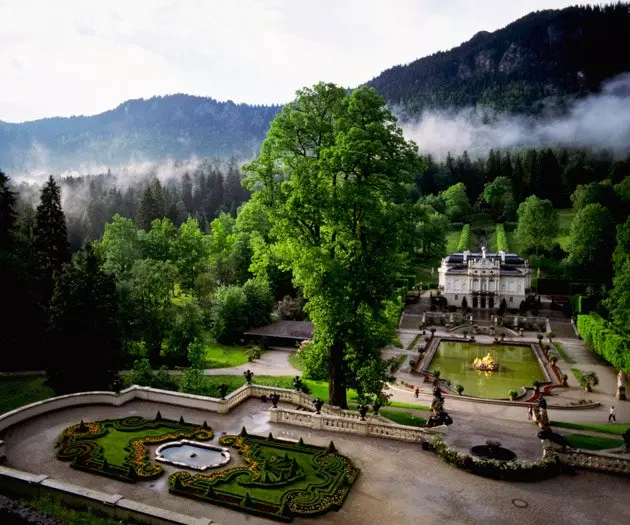
A Versailles palace
Inside, Louis XIV's motto that Louis II had taken on as his particular "winter is coming," "nec pluribus impar," presides over the ceilings, the curly-wigged silhouette of the Sun King is painted all over, and a statue of the same French king on horseback receives visitors today. It is curious that in his escapist fantasies taken to another level, Louis II built himself a replica of Versailles to be the closest thing to his home, when previously another queen of infamous end, Marie Antoinette, had built a farm in the gardens of Versailles (which had little to do with real farms) to play at being a shepherdess and escape precisely from the rigidity of the court.
The visit to the interior of Linderhof is brief; there are few rooms because the king liked to enjoy the place alone, they are decorated with a pageantry typical of the original Hall of Mirrors. When passing through the dining room, you have to look at the table and regret that it is not in action: it is equipped with a mechanism that made the food go up from a lower floor, with which the food appeared "magically" in front of the diner and saved that cumbersome obligation of having to see the faces of the servants.
It is in the visit to the gardens where more time is spent, with its views of the Bavarian mountains and its ideal combination of semi-wild forest and well-trimmed hedges . The king filled them with buildings in his love of playing house: the Moorish kiosk and the Moroccan house stand out, built for universal exhibitions, acquired and transferred here by order of the monarch; and Hunding's cabin, taken directly from the set of the Valkyrie opera and rebuilt today to recover its original appearance as the house of David the Gnome.
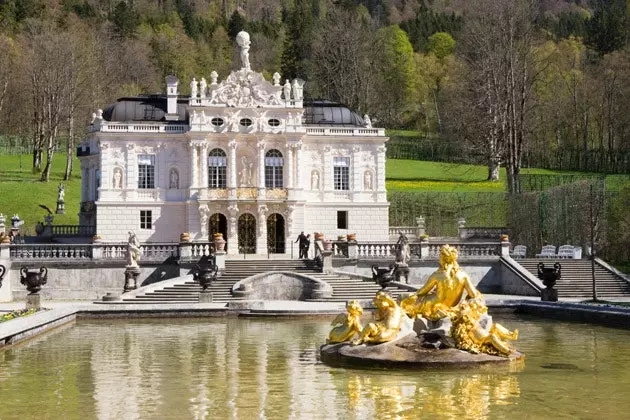
The longest visit is to the gardens
However, the most striking expression of the personality of Ludwig II is not any of the buildings seen here and perhaps not any of the other spectacular castles. It is in the construction of a Wagnerian grotto that we truly peer into the soul of man. Admiration and love? of the king by Wagner made him become his patron and inspired him to fill his constructions with Wagnerian elements. If for Neuschwanstein he was inspired by the myth of Lohengrin, here it is Tannhäuser who sets the pace.
The clearest example of how far he was willing to go is the grotto of Venus, a huge artificial cave in the middle of the Linderhof gardens. A background mural and fake stalactites completed the picture around a lake through which the monarch enjoyed sailing in a conch-shaped boat evoking the first passages of Wagner's opera.
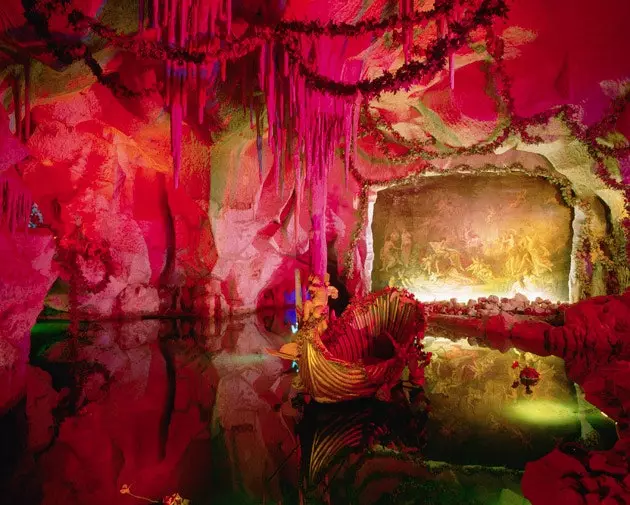
The grotto of Venus
The romantic spirit of the king was already so out of his time that the fascination it provoked among nostalgics and mythomaniacs is understandable. The boat is preserved in the same place, waiting for visitors for a game of music and lighting identical to the one that worked in the life of the king help us to put ourselves in situation. In Ludwig, the mammoth film recorded in real settings, Visconti -another aristocratic esthete- recreates Louis II navigating precisely through the grotto of Venus. The scene can be seen in the clip on the imdb file. Warning: You can kill the viewer with a sugar overdose, shock them deeply, or all at once.
If you get to the castle from Munich, the road passes next to Lake Starnberg, where on June 13, 1886 Louis II went for a boat ride accompanied by his psychiatrist, a few days after he had been declared incapable of governing due to his growing madness . Hours later they found both dead in the lake. The official version is that the king committed suicide and his psychiatrist also drowned trying to save him, but rumors of murder and conspiracy soon began to circulate. He was already a legend and his tragic end only multiplied it.
_ You may also be interested..._*
- Neuschwanstein, the blessed madness of Ludwig II - The 10 most beautiful villages in Bavaria
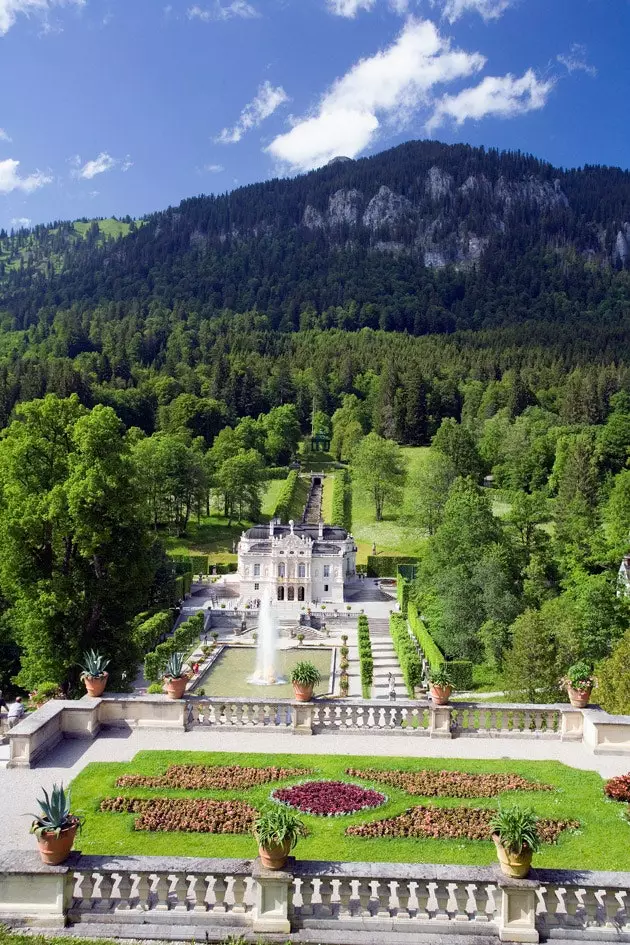
Views of the Bavarian forests and mountains
